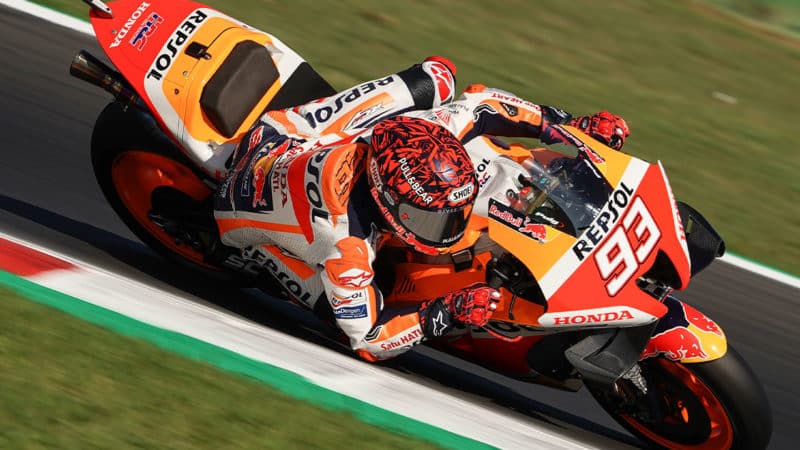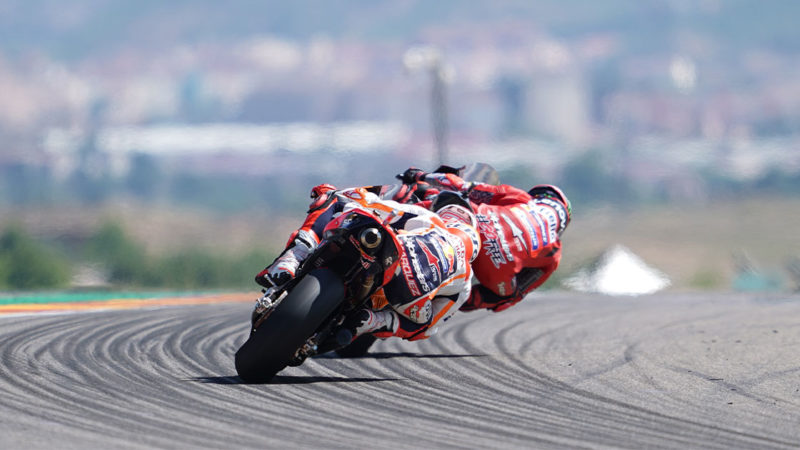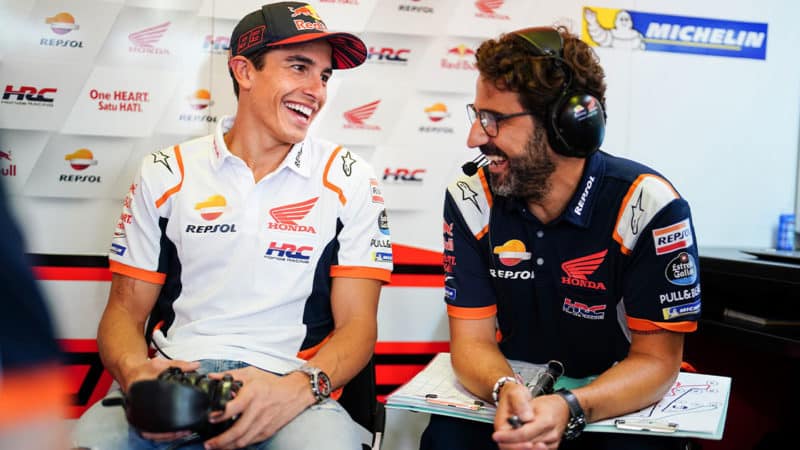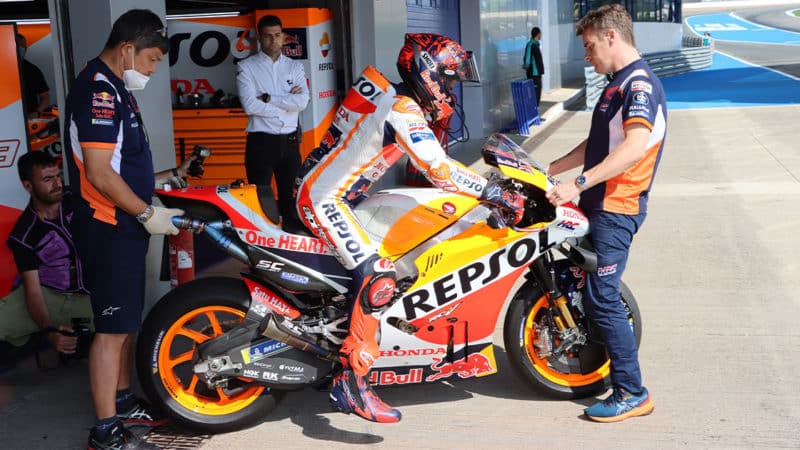Instead, there are two main focuses behind his earlier-than-expected return, 15 weeks after a humeral osteotomy on his troublesome right arm, the fourth since he broke the arm at Jerez. This required surgeons to saw through the humerus (upper-arm) bone, then rotate the lower segment by 30 degrees. This was to fix the problem that had haunted Márquez since last year’s comeback – due to earlier shoulder injuries and post-fracture problems with the arm he couldn’t get into the contorted position he needs to ride the way he rides.
His first focus therefore is fitness. Although Márquez says the bone is “100% fixed” he knows he isn’t 100% fit to race a MotoGP bike. He also knows that the only way to get there is by racing a MotoGP bike. Literally, the only way to rebuild the muscles and regain muscle memory is by putting himself through repeated 200mph, 60-degrees-of-lean and 2g-on-the-brakes gym workouts.
“The best way to grow the muscles, to be more confident and to be faster is to be on the bike,” he said after completing MotoGP’s two-day test at Misano last week. “Of course you need a minimum level in your arm, a minimum force, because the intensity of a race weekend is completely different to a test.”
Therefore expect Márquez to do mostly short runs during Friday and Saturday practice, then undergo ice and physiotherapy, gradually building strength, weekend by weekend.





